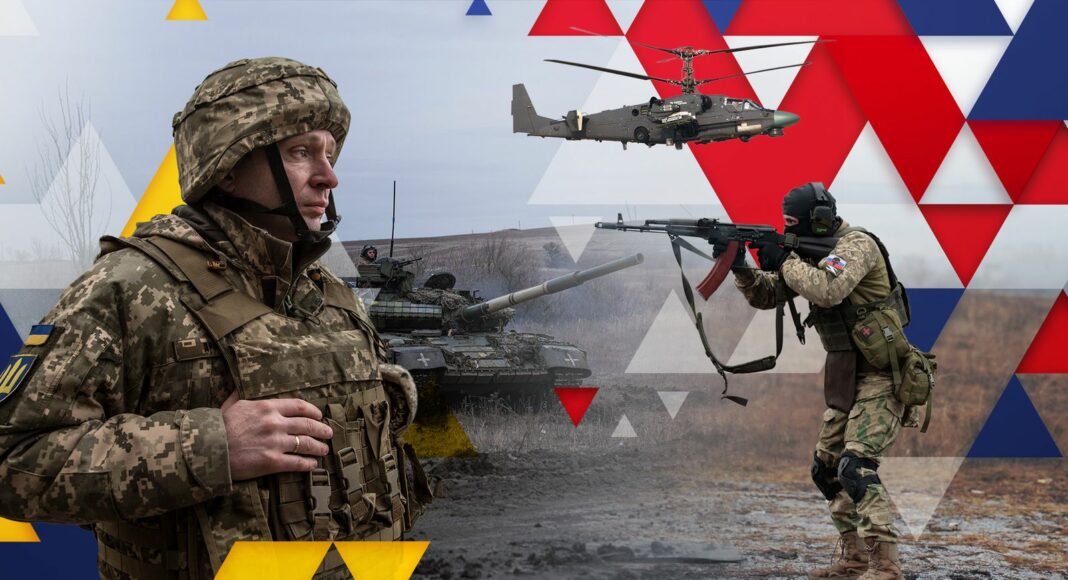Despite Russia having significantly greater firepower, its illegal invasion of Ukraine has not gone according to plan.
Although Ukraine was not a member of NATO, the West responded to President Volodymyr Zelenskyy’s appeal for help with a mass of hi-tech weapons and ammunition.
However, following nearly two years of high-intensity conflict, both sides are running out of munitions.
Ukraine-Russia war – latest updates
1:00
Zelenskyy: ‘Evil will be defeated’
Inspired by Ukraine’s initial successes at liberating 12,000 sq km of occupied Kharkiv in September 2022, the West proed a huge volume of military supplies to support Mr Zelenskyy’s spring offensive.
However, despite months of intensive fighting, the frontlines have not moved significantly, and both sides need more firepower to prevail.
No nation holds sufficient war stocks of ammunition to meet the demands of such a high-tempo war of attrition. Russia has always stockpiled basic weapons and is believed to have started the war with several million artillery shells – however, even these stocks are now running low.
Ukraine could not match Russia’s weapons stockpiles, but Western support focused on hi-tech weapons that proed Ukraine with precision strike capability.
But these Western weapons came from existing stockpiles, and no nation has the luxury of holding more weapons than it needs. Because of this, every weapon donated to Ukraine increased the national security risk for the donor nation.
Read more: Ukrainian drones ‘shot down over Crimea’Analysis: Deadly attacks are bad omens for 2024What went wrong for Ukraine in 2023?
5:38
Ukraine: What you missed in 2023
By donating “older stocks” of weapons, the West judged that the cost and risk implications were manageable, but the supply was – inevitably – limited.
To address the firepower shortfall, Russia has turned to North Korea to supply ballistic missiles and one million artillery shells, and repeat orders can be expected.
Iran is happy to supply drones and larger missiles, which might not be as capable or effective as their Western counterparts, but crucially they are available now. And Russia has a huge defence industrial base which has shifted on to a war footing, funded by huge oil revenues. Russia is rearming, and fast.
1:00
Russian hypersonic ballistic missile attack
In contrast, Ukraine has a fledgling industrial base which is very vulnerable to Russian missile attacks – it takes months to build manufacturing capability, and a single strike by Russia to destroy it. Ukraine hopes to build one million drones this coming year, but it cannot match Russia’s defence industry’s capacity or capability, and it does not have the weapons to threaten Russia’s industrial base.
Ukraine’s GDP is also a fraction of the size of Russia’s – £157bn versus nearly £1.6trn – so it cannot compete with Russia’s global purchasing power or national defence industrial capability.
So where does that leave Ukraine? Without considerable and enduring Western military support, it is destined to become overwhelmed – eventually – by Russia’s considerably greater ability to rearm.
0:42
Russian airstrikes target Kyiv
Denuded Western stockpiles cannot meet Ukraine’s needs, but the West does have considerably greater capacity to mobilise its defence industrial base if it chooses to do so.
Earlier last year, the West promised Ukraine it would proe a million rounds of artillery by March 2024. Although Western industry has the capacity to respond, this promise will not be kept.
Western political support for Ukraine remains robust, but this intent has yet to be matched by the requisite collective financial commitment.
0:25
Moment Kyiv building explodes
Western defence planning assumed that high-intensity enduring wars were unlikely to be a near-term issue, and that technology would proe it with an asymmetric military advantage.
However, specialist weapons are expensive and can only be procured in relatively small numbers. And they cannot be easily replaced as the production lines only remain open until orders are fulfilled, and the technology is rapidly obsolete.
Mr Zelenskyy has always claimed that he is fighting Russia on behalf of the West, without it having to commit combatants. But Ukraine cannot prevail without military (and financial) help.
0:31
Proposal after prisoner exchange
An emboldened Putin might not be a threat beyond Ukraine’s shores in the very near term, but a victory in Ukraine would inevitably have long-term consequences. And what would China – with its eye on Taiwan – make of such a victory?
The Ukraine war has exposed some critical shortcomings of the West’s wartime assumptions. Unless it commits to a coordinated long-term strategy to generate the weapons Ukraine needs – and urgently – it will hand Putin the victory he craves.




